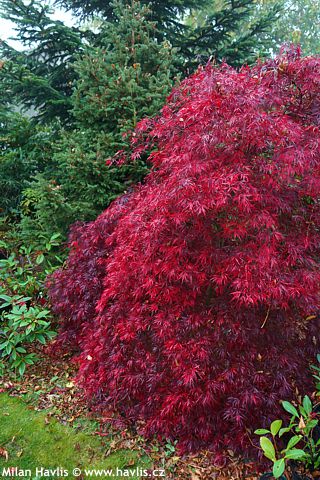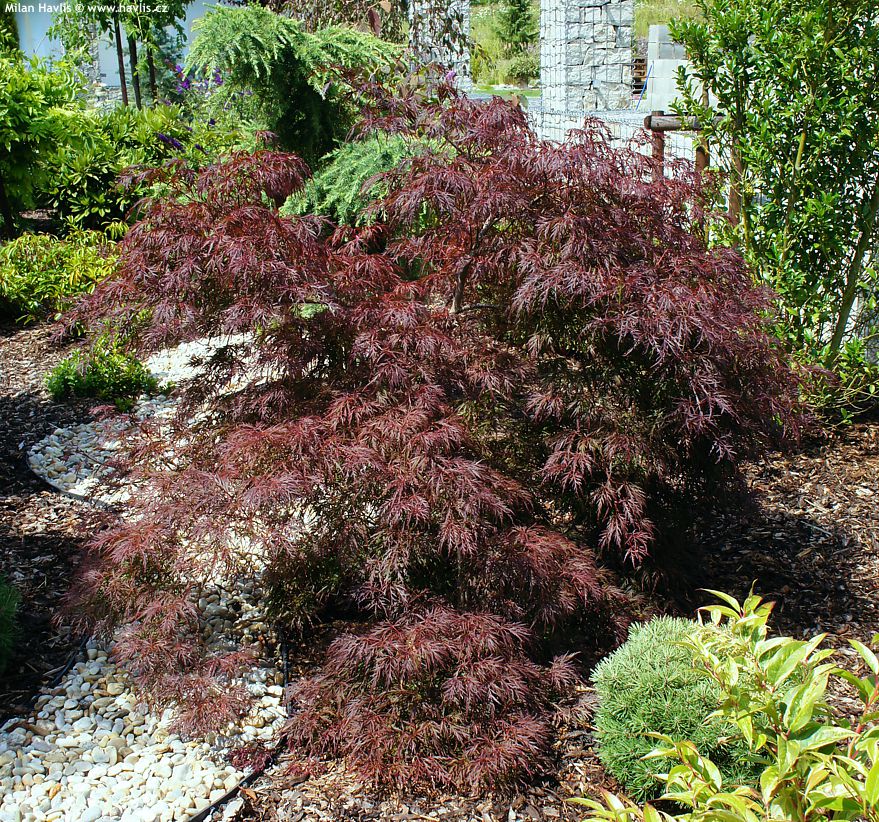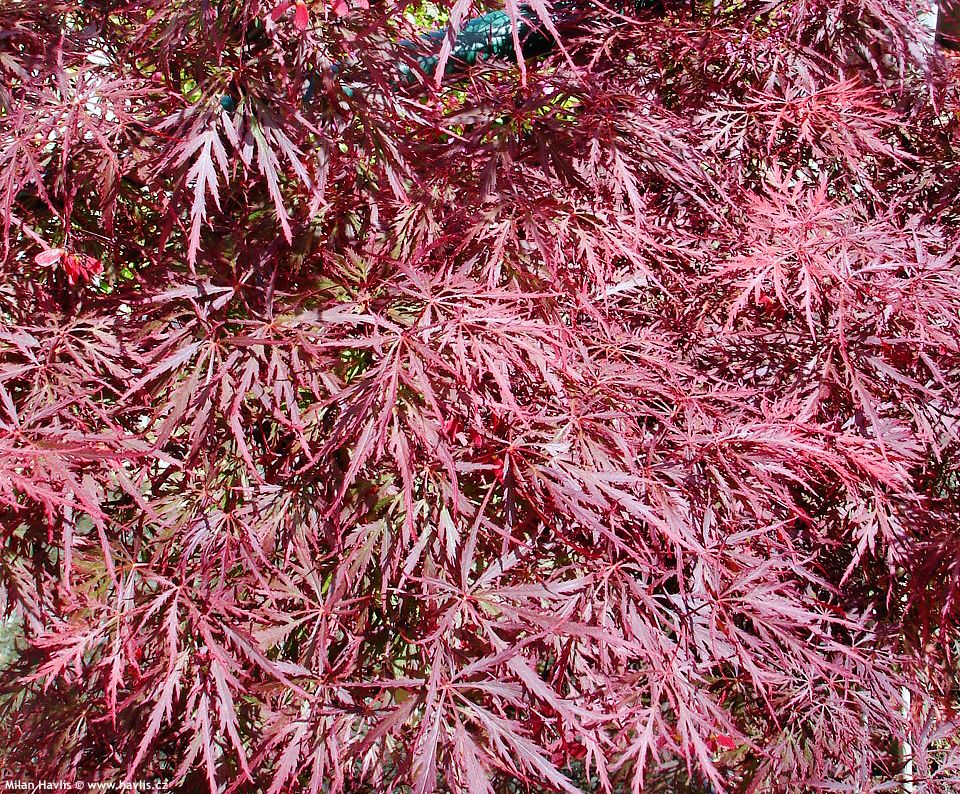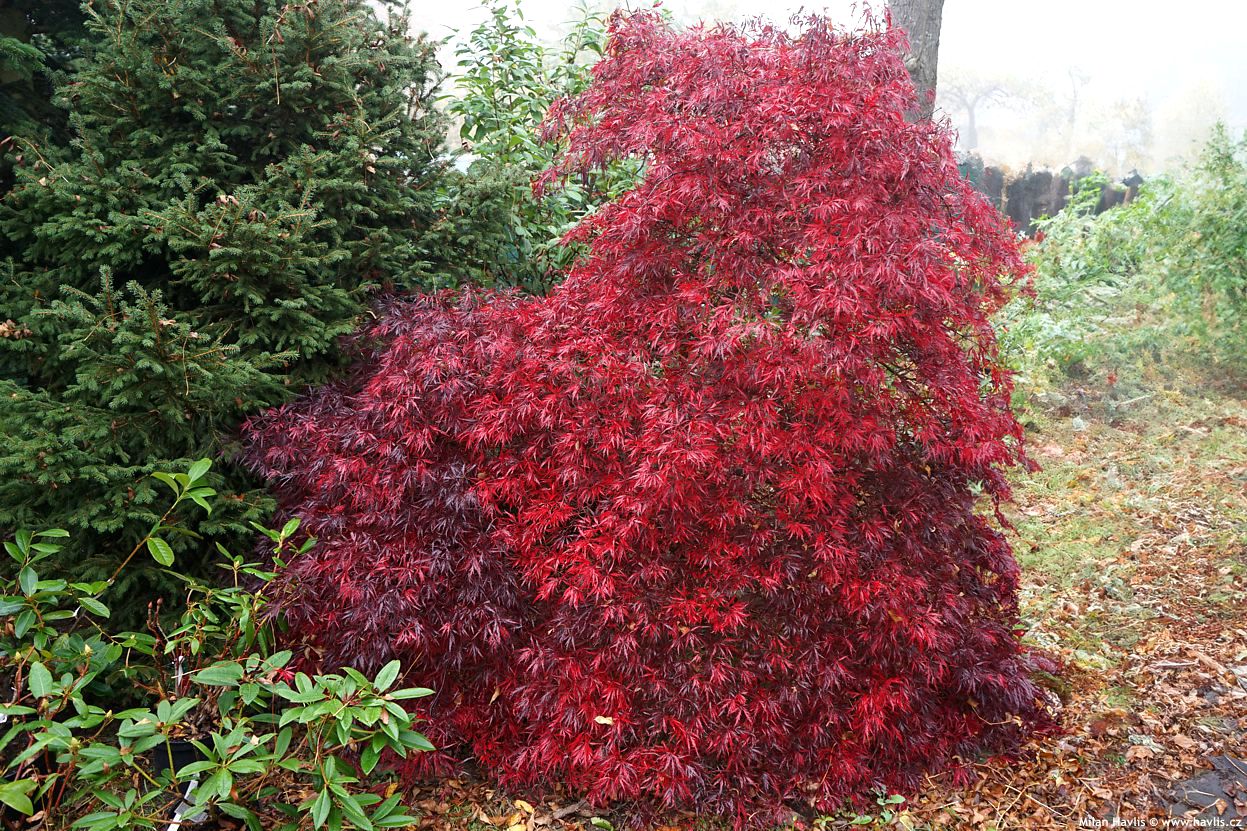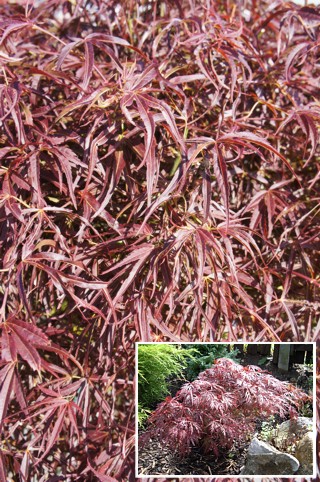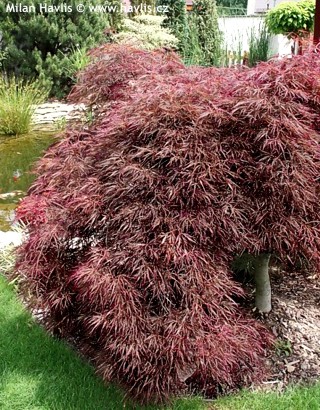Acer palmatum (Dissectum group) 'GARNET' Japanese maple
Acer
Japanese maples are very decorative and usually low shrubs, occasionally small trees, with attractive foliage and picturesque structure. There are many varieties in various shades of green, chartreuse, golden and yellow, red to maroon, and even multicoloured (variegated). They originate from Asia (Japan, China, Korea), where they have been cultivated for at least two centuries or perhaps even longer, however, they were introduced to Europe only at the beginning of the 19th century, specifically to Great Britain in 1820. Interestingly, the botanist Carl Peter Thunberg described them much earlier, in 1784, because he undertook an expedition to Japan in 1775-1776, discovering new species and collecting seeds and plants. He named the tree Acer palmatum, referring to the leaf shape resembling a human hand with fingers, although it is said that they first reminded him of frog fingers, which is also one of its oldest Japanese names: kaede. The other is momiji (baby hands). The beauty of the colours and shapes of the leaves and trees is reflected in many arts, for example, in the oldest preserved collection of Japanese poetry from the 8th century, the Man'yōshū (Collection of Ten Thousand Leaves). The Chinese poet Wang Wei (699-759) celebrated their beauty in many of his works, and naturally, maples often appeared in ancient paintings, tapestries, porcelain, and wherever classic and traditional decorations associated with the symbolism of these maples were desired: beauty and elegance, serenity, endurance, vitality, and transformation.
Garnet is one of the top selling Japanese maples ever. It has been popular around the world for many decades. Its filigree leaves are deeply cut = dissected, hence its name. They look like giant snowflakes cut in pieces and densely cover even young plants. The colour show begins with vibrant red in the spring, turning crimson red in early summer and deep burgundy in late summer, finishing up with vivid reddish-purple in the autumn.
It grows slowly and forms a shrub that is rather wider than tall. Branches are pendent making an umbrella appearance. It is often grafted on short stems or half-standards so you can fully enjoy its drooping branches. It needs light, acidic, well drained soil that will retain moisture. Red-leaved Japanese maples do well in full sun if you mulch the roots sufficiently not to dry out in hot summers. They will grow in semi-shade or filtered sun, too, but the leaf colour will be slightly paler with more shades of green. If you feel you need to feed it, use balanced, slow-release fertilizers only.
It can be trimmed or shaped as a bonsai. My feeling is that it is best to leave it with no pruning at all so it can show its irregular growth which makes each one an unrepeatable original. If you wish to cut it anyway do so after danger of all frosts at the earliest, until mid summer at the latest. Plants older than 3-5 years (wood maturity pending) are fully hardy to about -30°C (USDA zone 5).
Last update 20-12-2007
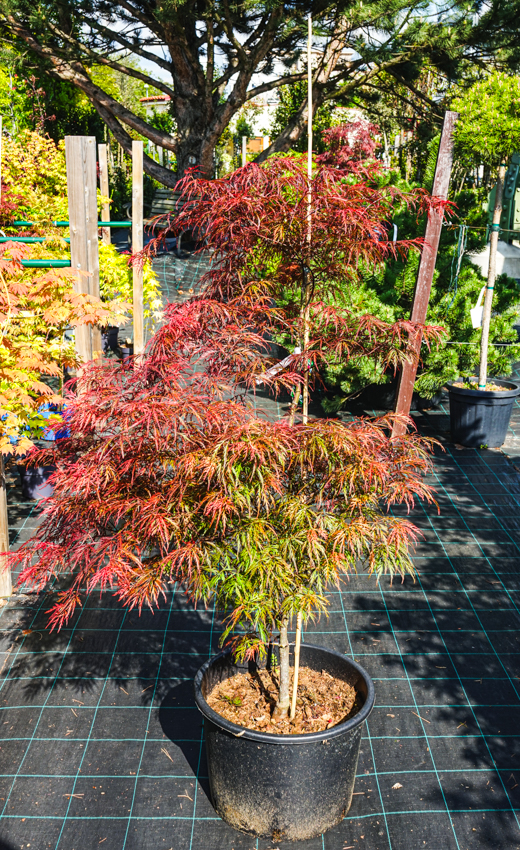
7 565 Kè

7 565 Kè
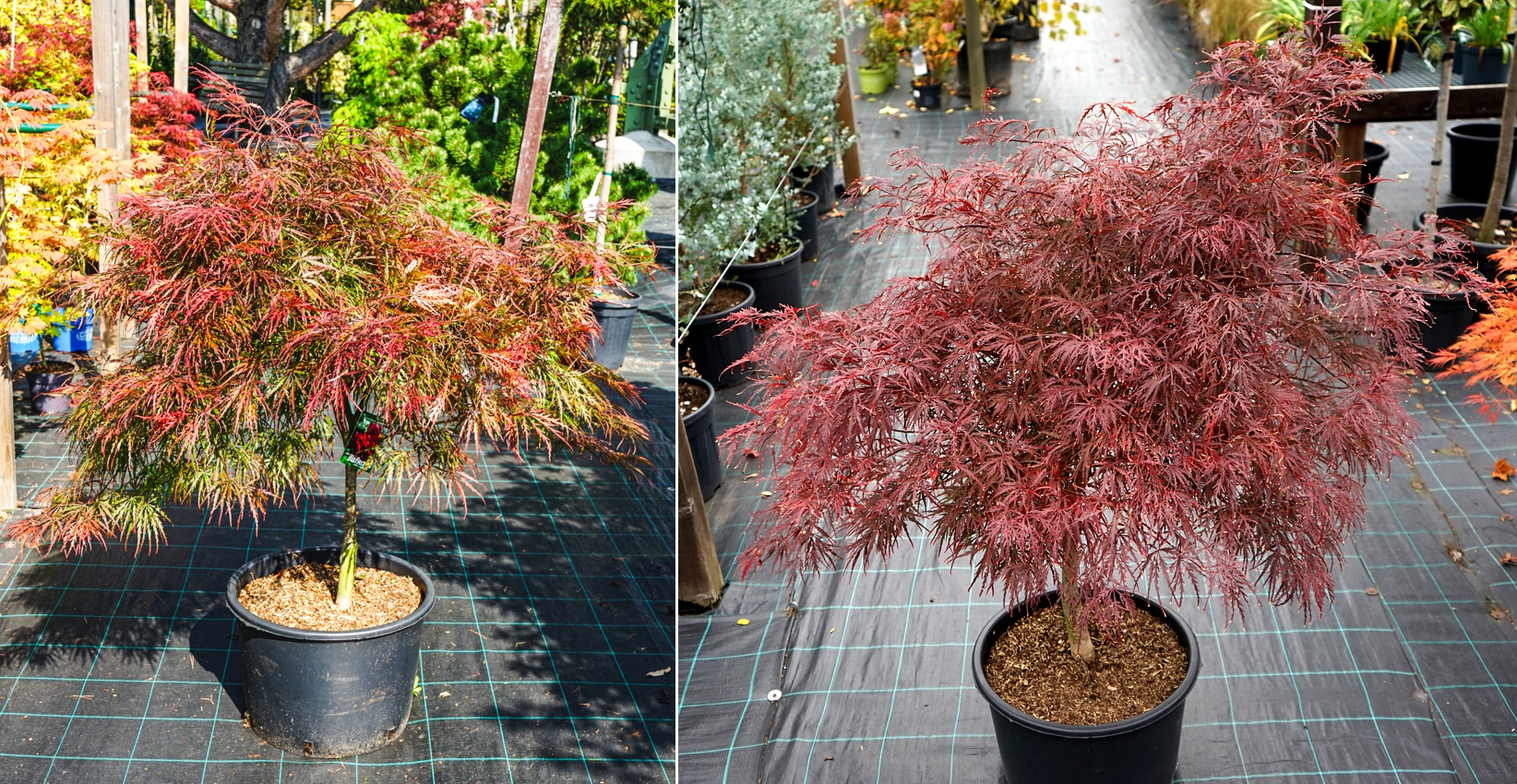
11 041,5 Kè
Goods are shipped all over Europe. For Russia and U.K. and for further details please read about SHIPPING OPTIONS HERE.
Are you interested in a serious discount for orders NOV-FEB? Check your options here.
THE PRICES INCLUDE VAT of 15%. For quick conversion you can use 1 CZK = approx. 0.04 EUR
- STANDARD QUALITY - Plants of this group are 1st class quality with number of branches and overall density adequate to their size and age, considering they were container grown.
- DE LUXE QUALITY - This label guarantees a luxurious quality of manually selected plants that, compared to their height and age, are exceptionally dense and beautiful.
- EXTRA - These plants are usually mature and bigger specimens with exceptional overall appearance.
- STANDARD (as described in the plant form) means a tree with a trunk of 190-210 cm and a crown at the top, unless specified differently. The commercial size for trees is their girth measured in the height of 1m from ground.
- HOBBY - These plants are of the same quality as our standard-quality plants but younger and therefore cheaper.
- SHRUB - a woody plant with branches growing bushy from the ground level.
- HALF-STANDARD or MINI-STANDARD - a small tree with shorter trunk, its size is usually specified.
- FEATHERED - These are trees with branches growing already from the base of the trunk and up along the stem.
- GRASSES and PERENNIALS - Sizes given usually read the diameter of the pot or the clump, as specified.

































